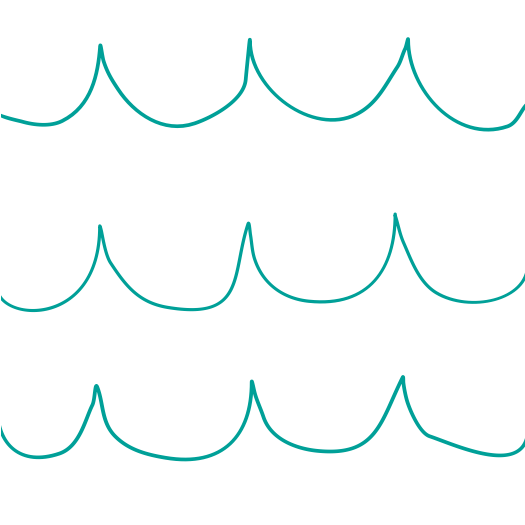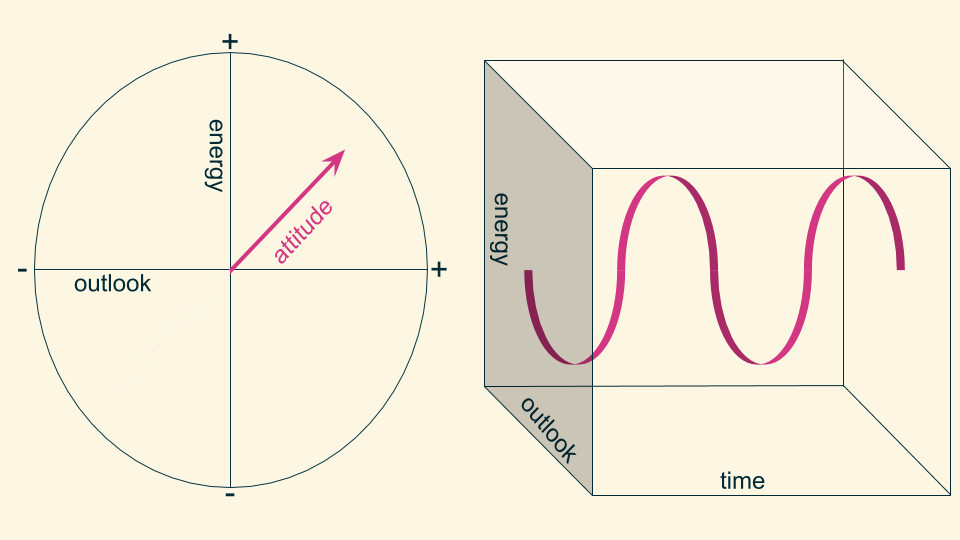When someone asks: "How are you?", I’m likely to respond with "I'm good" and out of some bizarre courtesy, never with "I'm not good". However I respond though, I am using a name and form to describe my current mode of experience. Yet my mode of experience extends beyond social greetings. All of my behaviors are flavored by it, in a sense I am pantomiming my mood.






What are the methods to manufacture happiness? It may not appear possible, yet a closer examination of external stimulus and internal dialogue yield the clues.
The word mood has its roots in the Old English word mōd, pronounced mode which means mind, heart or spirit. My mood can be viewed as a fluctuating disposition that causes me to perceive unfolding situations as being positive or negative experiences.
To manufacture happiness, I need a well defined process. Now, what is manufacturing? It is the behavior of making or creating something on a large scale using machinery. A manufacturing process, then, is a series of behaviors that transform feedstocks into a desired product. In this case the desired product is happiness. My current mood, be it happiness or not is the outcome of all the contributing factors in my life at this moment.
A manufacturing process requires ways to measure and quantify its own outcomes. When the process isn't working, when the product is defective, historical data will indicate how to improve the defect rate. When I measure and quantify my mood and attitude it is important to keep a record of this data. I can correlate the data with additional information such as my biometrics or the activities from my schedule. The additional data all adds up and contributes to my mood. With the correct tools, I can learn to influence the external and internal control factors that contribute to my mood and steer intelligently.
I try and record the state of my mood in a calendar. To visualize how this is done, create a vertical axis depicting positive or negative mental energy levels. Next, create a horizontal axis depicting positive or negative outlook. The combination of these two axis creates a space of possible feelings. A point in this space represents my mood. I can attach names and forms to label these moods. Negative energy with negative outlook is depression. Positive energy with negative outlook is anxiety. Positive energy with positive outlook is elation. Negative energy with positive outlook is serenity.
My intended behavior is like a vector in this space. In the image, it is shown as a pink arrow. Using a computer, I could stretch this mood space through a third dimension representing my mood as it oscillates in time. Using my other calendars I can bring more data into the picture and discover all of the control factors that contribute to my mood.
Emotions are transient, they arise from awareness. Through events happening in the environment, my memories or imaginings they come to my attention suddenly. My mood attenuates or amplifies aspects of experience. That is to say, my mood filters for negative or positive attributes of the unfolding situation and makes them more or less important than they really are. My mood tunes into particular parts of the emotional spectrum, giving greater probability of emotional response for those emotions that are aligned with the mood. Emotions are fed by and feedback into my overall mood and my attitude guides my mood into the future.
The word attitude shares the root word aptus with aptitude. I remember it means to fasten or to join. Or, more aptly: fitted, fastened, connected, prepared. Later, from the italian word attitudine meaning fitness or posture, the english word attitude emerged in the late 17th century denoting the placing or posture of a figure in art. Now, it means a settled way of thinking reflected in behavior but is more commonly used informally to describe negative behavior.
Attitude is a mental posture. Like the posture of an aircraft in flight the attitude of the craft governs its rate of ascent and descent. The same is true for me. My craft, my mind and body can ascend and descend in emotional turbulence. The mental posture I assume plays an important role in dampening oscillations. My attitude is the behavioral manifestation of an internal intention. If I intend to be negative, my behavior becomes negative. If I intend to be positive my behavior will become positive. The realization is that these behaviors accumulate over time to feedback and contribute to my overall mood.
I experience reality through my five senses. I can attenuate or amplify the signals from the environment that bombard my five senses. In turn, the signals I give the environment will feedback and reinforce my behavior. The cumulative effects of this feedback loop is a sustained mood. If I want to take real control of my mood, I first begin with an attitude that vectors toward an intention to change my mood. Combine attitude ( that mental posture that drives behavior) with additional behaviors that support a lasting change. This requires an amplification or attenuation of certain control factors.
Mental posture and thought patterns are control factors. As well as nutrition and exercise which affect the chemistry of the mind and body. Hygiene and nutrition affect the microbiology of the body which affects the chemistry of my brain. My body posture pantomimes psychological predispositions, displayed to the world the impressions on others feedback and reinforce the effects in my own mind. Fashion can provide temporary changes in mood. Over time temporary changes accumulate and multiply their effects.
My five senses deliver information to my mind. My sight perceives the intensity and interplay between light, color and shadow. My hearing gives a sense of tone, rhythm, melody and harmony. My taste is a sense that is always working, a control factor that can be utilized even outside of meal time. Smells are all around me, and this control factor can affect my mood. The sense of touch is a control factor that gives me information about material qualities and physical vibrations.
Time and space are control factors. The amount of time I have can deliver stress and anxiety or give peace and relaxation and I will confess to you, it is most often the former. The space I have can be crowded or oppressive, or open and imaginative.
My environment outdoors provides weather, sunlight, and at night perhaps artificial lighting. Outdoor spaces where I live have a particular air quality and buildings with distinctive architecture. These attributes of the environment interact with my five senses and affect my mood. However, the control factors are the indoor spaces’ air flow, the décor, ambient temperature and mood lighting.
My network of associates and friendships form my social network. The information and attitudes that are communicated through my social network can affect my mood. Likewise, the information I receive from the media I select and tune into will affect my mood.
Ultimately all of the ways in which I can change my mood involve either an amplification or attenuation of external stimulus or internal dialogue. These are the control factors in my factory for manufacturing happiness. I am still learning to use them all.
After surveying the gamut of control factors for which wich I can exert influence over my mood, I find that I ultimately have a great deal of control. My mood is affected by repetition. Repeating patterns like water etch canyons of thought. The more repetitions, the easier it is for thoughts to flow through these canyons, and the harder it is for them to flow anywhere else. Positive or negative, my mood acts as my armor. It protects me from the world by affecting the way I perceive it. A negative mood looks for negative evidence in unfolding situations while a positive mood looks to reinforce itself by looking for positive evidence instead.
There is no border between the mind and body, that border that we use for the purpose of language is illusory, and you learn to make those distinctions to communicate yet somehow along the way the distinction necessary for language is conflated with the reality of enormous interconnection. A complete oneness.
█




